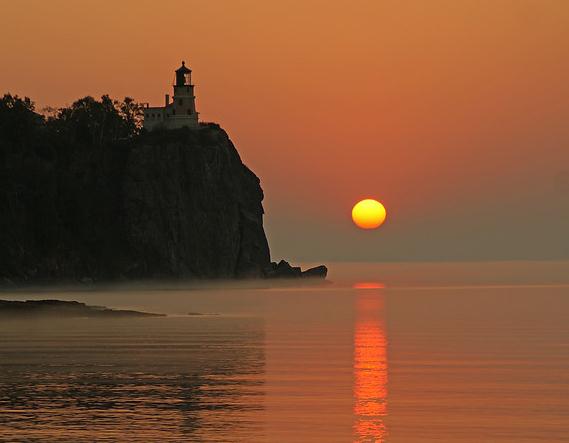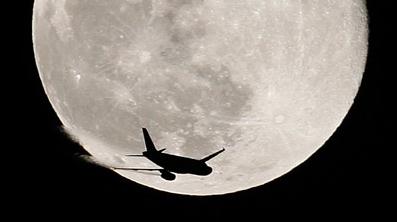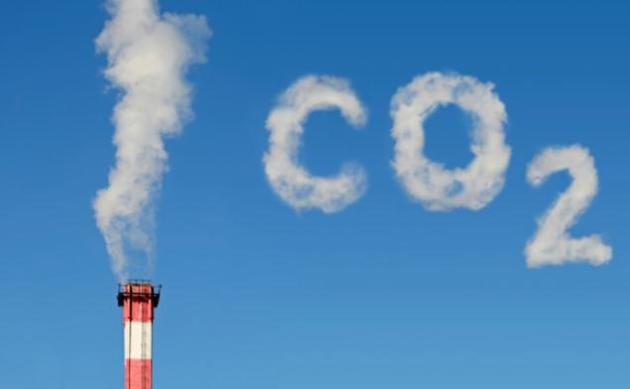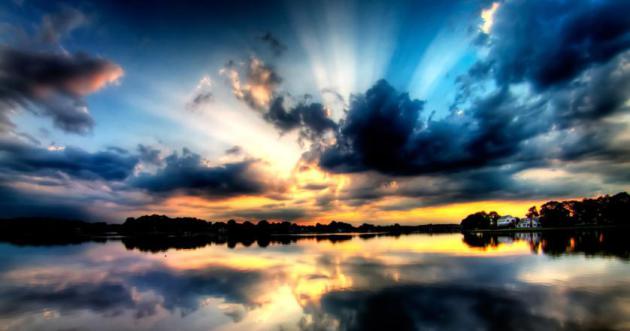49 F. high in St. Cloud Wednesday.
55 F. average high on October 19.
73 F. high on October 19, 2015.
October 20, 2002:
Heavy snow impacts central Minnesota. It fell in a 10-20 mile wide band
from southeast North Dakota to around Grantsburg, Wisconsin. Little
Falls picked up 9 inches.
October 20, 1916:
Accumulating snow falls in south central Minnesota with 4.5 inches
recorded in New Ulm, 4 inches in Farmington and Hutchinson, 3.5 inches
in Montevideo, and 3 inches in Faribault.
October 20, 1835: 6 inches of snow falls at Ft. Snelling.
More Cool Fronts Than Cold Fronts Next 2 WeeksWell,
this is a terrible inconvenience. You're telling me I can't wear shorts
while walking the dog today. Wait. I might even have to slip into a
light jacket
tomorrow morning? In late October. How unfair. I thought summer would linger indefinitely, that winter had been cancelled this year.
Yes,
it's warming, but if it ever gets to the point where we don't see snow
or cold fronts the planet will face much bigger challenges.
If you miss out on a (first) frost
tomorrow
morning chances are your yard will remain frost-free for the next 1-2
weeks. I'm tracking a few feeble puffs of Canadian air - but nothing I'd
label a 'cold front'. Not yet.
Take advantage of a dry west-to-east "zonal" wind flow aloft with a dry sky into
Tuesday morning of next week. Yes, we may even go 6 days in a row without measurable rain!
Southern moisture fuels a storm with heavy rain
next Tuesday and
Wednesday. In fact long-range models suggest mild and wet into at least the first week of November.
The Guess-Cast for Halloween? Drizzle or light rain and 50s. My crazy-clown costume may get soaked.
* Photo credit above:
Paul Sundberg Photography.
Hottest Months on Record Have Something in Common.
Climate Central reports: "...
The
run of record-setting months means 15 of the most abnormally warm
months have occurred since March 2015. Accounting for ties, the only
exception is January 2007 which came in tied for 11th. There has never
been a run of hot months like this in the 1,641 months (or 136-plus
years) of data at NOAA’s disposal. March 2016
tops the list with a global temperature 2.21°F (1.23°C) above the 20th
century average. Even though September 2016 is the second-warmest
September on record, it’s still on the list clocking in at 11th with
temperatures 1.6°F (0.89°C) above average..."
Map credit: "
The year-to-date heat has the world on track for its hottest year on record."
Basically Dry Through Tuesday Morning.
We get a break, 6 dry days in a row until the next significant storm
taps moisture from the Gulf of Mexico. NOAA models hint at over 1" of
rain the middle of next week. Source: Aeris Enterprise.
7-Day Rainfall Forecast.
NOAA WPC prints out some 5"+ precipitation amounts for northern New
England (some of that may fall as heavy wet snow). Soaking rains impact
the Pacific Northwest; over 1" of rain may soak the Upper Midwest the
middle of next week.
Deep Chill On Indefinite Hold.
At some point we'll see a real cold front and slush, but the 2-week
forecast shows a mild bias continuing for most of the USA, with the
exception of New England and the Pacific Northwest. 500mb winds (18,000
feet) valid Wednesday evening, November 2.
3-Month Temperature Outlook.
The forecast from NOAA's Climate Prediction Center shows warmth
spilling into December; the warmest anomalies over the southwestern USA.
GPM Sees Hurricane Matthew's Life Cycle. NASA has a terrific explainer on YouTube: "Hurricane
Matthew dropped a lot of rain, caused flooding and deaths in the state
of North Carolina. Flooding is still widespread in North Carolina. Some
rivers in North Carolina such as the Tar and the Neuse Rivers were still
rising on Oct. 12, 2016. At NASA's Goddard Space Flight Center in
Greenbelt, Maryland, a rainfall analysis was accomplished using data
from NASA's Integrated Multi-satellite Retrievals for GPM (IMERG). The
GPM, or Global Precipitation Measurement, mission is a joint mission
between NASA and the Japan Aerospace Exploration Agency (JAXA). This
rainfall analysis was created using IMERG real time data covering the
period from Sept. 28 through Oct. 10, 2016. The totals included some
rain from a low pressure area that moved through the area near the end
of September..."
Animation credit: "
NASA's Goddard Space Flight Center/Ryan Fitzgibbons, producer."

Hospitals Really Believe Bad Things Happen On a Full Moon. Add meteorologists to the list. Here's an excerpt from
The Wall Street Journal: "...
Since
the Middle Ages, full moons have been associated in the popular
imagination with spooky occurrences: Werewolves. Vampires. The word
“lunacy” derives from the bizarre effects that full moons supposedly
have on behavior. In hospitals all over America, doctors and medical
staffers—supposedly pragmatic professionals rooted in science—are
convinced that full moons are harbingers of chaos in their emergency
rooms and delivery wards. Doctors and nurses say a full-moon night,
particularly right before Halloween, triggers a flood of admissions,
notably among patients suffering psychotic episodes, sporting strange
injuries or going into labor under unusual circumstances..."
How Will The Lurking La Nina Affect Our Winter?
Great question. It may increase the probability of a winter colder than
last winter - a bit closer to average. Whatever that is. Details via
USA TODAY: "...
The
La Niña climate pattern — marked by cooler-than-average ocean water in
the central Pacific Ocean — is one of the main drivers of weather in the
U.S. and around the world, especially during the late fall, winter and
early spring. An official "La Niña watch" was issued Thursday by NOAA's
Climate Prediction Center, which means the pattern is likely to form
within the next few months. Specifically, La Niña has a 70% chance of
developing this fall and a 55% chance that it will persist through
the winter of 2016-17, said Mike Halpert, deputy director of the
prediction center..."
Crash: How Computers Are Setting Us Up For Disaster.
Imagine life without your smart phone or Google. Are computers making
us (dangerously) lazy? Here's an excerpt from a story at
The Guardian: "
This
problem has a name: the paradox of automation. It applies in a wide
variety of contexts, from the operators of nuclear power stations to the
crew of cruise ships, from the simple fact that we can no longer
remember phone numbers because we have them all stored in our mobile
phones, to the way we now struggle with mental arithmetic because we are
surrounded by electronic calculators. The better the automatic systems,
the more out-of-practice human operators will be, and the more extreme the situations they will have to face. The psychologist James Reason, author of Human Error, wrote: “Manual control is a highly skilled activity, and skills need to be practised continuously in order to maintain them..."
AP Exclusive: U.S. Ignored Rising Sea Warnings at Radar Site. Here's an excerpt from
MSN.com: "
The
U.S. Air Force is spending nearly $1 billion to build a radar
installation that will help keep astronauts and satellites safe by
tracking pieces of space junk as small as a baseball. That is, if global
warming doesn't get in the way. The Space Fence is being constructed on
a tiny atoll in the Marshall Islands that scientists say could be
regularly swamped by rising seas within a couple of decades as a result
of climate change. The salt water could play havoc with the equipment,
the scientists say. And The Associated Press found that neither the
military nor its contractor, Lockheed Martin, gave serious consideration
to that threat when designing the installation and choosing a site,
despite warnings from the island nation's environmental agency..."
Photo credit: "
This
Nov. 5, 2015, photo shows a heavy earth mover building a sea wall on
Majuro Atoll, Marshall. Rising seas in the Marshall Islands can be seen
on many of the Atolls in the group as more coastline disappears and
vegetation is washed away. The US military ignored warnings about rising
seas to build a space radar costing nearly a billion dollars on a tiny
atoll in the Marshall Islands. The Space Fence system is considered
vital for keeping astronauts and satellites safe by tracking space junk
as small as a baseball." (AP Photo/Rob Griffith)
Minnesota's Largest Solar Farm About To Open; Here's What It Looks Like From the Air. More encouraging developments chronicled at
Minneapolis St. Paul Business Journal: "
The
North Star Solar project, which covers 1,000 acres in Chisago County
with more than 440,000 panels, is completed with a ribbon-cutting
scheduled for Wednesday. It will go online in December, pumping out 100
megawatts, or enough power for 20,000 homes. It will be the largest
solar farm in Minnesota and one of the biggest in the nation, according
to a new release from Xcel Energy Inc. (NYSE: XEL). Minneapolis-based
Xcel will buy power from the facility under a 25-year deal and is part
of the energy company's plan to get one-third of its energy from
renewables by 2030..."
Photo credit: Swinerton Renewable Energy. "
Construction
is complete on the North Star project, whichspans 1,000 acres in
Chisago County. It's expected to start providing power to Xcel Energy
in December."
Batteries May Trip "Death Spiral" in $3.4 Trillion Credit Market. Here's an excerpt from
Bloomberg: "
Battery
technologies starting to disrupt the electricity and automobile
industries may also emerge as a trillion-dollar threat to credit
markets, according to Fitch Ratings. A quarter of outstanding global
corporate debt, or as much as $3.4 trillion, is linked to the utility-
and auto-industry bonds that rely on fossil fuel activities, the ratings
agency wrote in a report published Tuesday. Batteries have the potential
to “tip the oil market from growth to contraction earlier than
anticipated,” according to Fitch. “The narrative of oil’s decline is
well rehearsed -- and if it starts to play out there is a risk that
capital will act long before” and in the worst case result in an
“investor death spiral...”
 The Shift to Renewables: How Far, How Fast? Forbes
The Shift to Renewables: How Far, How Fast? Forbes has a story that frames the challenge - and market opportunity: "
Powering
the United States or the world with 100% renewable energy is the stated
goal of many individuals and organizations. What they are really
talking about is 100% renewables to generate electricity, because it’s
not feasible in the near-term to replace motor fuels with renewables.
Views of how quickly this can be done are highly polarized – some
predict less than two decades, while others see fossil fuels as the
dominant source at least through 2050. The primary argument for
renewable energy is to avoid anthropogenic, or human-caused, climate
change by reducing CO2 emissions. Progress toward that goal
has fallen well short of reductions believed by the Intergovernmental
Panel on Climate Control (IPCC) to be necessary to avoid catastrophic climate change..."
Scientists Accidentally Discover Efficient Process To Turn CO2 Into Ethanol. These are the kinds of breakthroughs that will allow us to start removing CO2 from the atmosphere in the years to come.
Popular Mechanics reports: "
Scientists at the Oak Ridge National Laboratory in Tennessee have discovered a chemical reaction to turn CO2 into ethanol, potentially creating a new technology to help avert climate change. Their findings were published in the journal ChemistrySelect.
The researchers were attempting to find a series of chemical reactions
that could turn CO2 into a useful fuel, when they realized the first
step in their process managed to do it all by itself. The reaction turns
CO2 into ethanol, which could in turn be used to power generators and
vehicles..."
Kansas Town Decimated by EF-5 Tornado Now Runs on 100% Renewable Energy.
EcoWatch has the uplifting article: "
But from the rubble, opportunity emerged. Greensburg is now one of the greenest towns in the U.S. and serves as an actual role model for renewable energy and sustainable development. Greensburg could also teach its frack-happy, earthquake-riddled home state a lesson or two about better energy choices. Greensburg—the second U.S. city to go 100 percent renewable after Burlington, Vermont—has an impressive list of green bonafides thanks to its master sustainability plan.
After the tornado struck, the city picked itself up and rebuilt every
building to LEED-platinum standards and converted every streetlight to
LEDs, the first in the nation to do both..."
Photo credit
upper left: "Greensburg, Kansas is the second city in the U.S. to
convert to 100 percent renewable energy after it was devastated by a
powerful tornado in 2007." Wikimedia Commons.
Photo credit upper right: "
A hospital turbine in Greensburg, Kansas." The City of Greensburg.
Conservative California Desert Town On The Cusp of Emerging Solar Trend. Here's an excerpt from
eenews.net: "...
When
you can save money with solar and not have to build these electric
plants, it's good for everybody," she said. It helps with climate
change, she said, and "I want to make things better for my grandkids and
my kids." Lancaster is a politically conservative place. But Republican
Mayor R. Rex Parris, who has held the post since 2008 and will serve
through at least 2020, sought the requirement in 2013 because "there
isn't any greater crisis facing the world today" than climate change (ClimateWire,
March 8, 2013). At the time Lancaster passed the mandate, it was the
first of its kind in the nation. It was also at the front of a trend..."
Photo credit: "
Kathy Reinhart's home in Lancaster, Calif., features three solar panels on the roof."
Photo courtesy of Kathy Reinhart
Will Driverless Cars Really Save Millions of Lives? Lack of Data Makes It Hard to Know. Here's an excerpt of an interesting post from
The Washington Post: "...
One
of the hardest questions to answer is, ‘How do these cars compare to
human drivers?’ ” Chris Urmson, then the chief of Google’s self-driving
car project, told transportation engineers in Washington this year. “And
part of the reason why that’s hard is we don’t actually have a good
understanding of how good human drivers really are.” One problem is that
the U.S. government keeps no comprehensive database of crashes. That
complicates what otherwise might seem to be a simple task: figuring out
which vehicles are more likely to crash, human-driven ones or those run
by software and sensors..."
Most Googled Question In Every State.
O.K. Let me get this straight. Minnesotans love quilting, but Wisconsin
wants to impeach their governor? I'm so confused. But what the hell is
going on in Kentucky and Oklahoma? I worry for America. Check out the
article at
Esquire.
He Ate a Pepper So Hot It Tore a Hole in His Esophagus. Why do people do this to themselves? Here's a clip from
The Washington Post: "...
For the
47-year-old man whose esophagus was damaged, though, ingesting the
pepper burger was less a bear chase and closer to an attack. As
physicians at the University of California at San Francisco reported in
the case study, he consumed the burger and attempted to quench the heat
in his mouth with six glasses of water. When that failed the man began
to vomit, which gave way to abdominal pain. He dialed emergency help. At
the emergency department, he received Maalox and painkillers. After his
condition worsened, doctors moved him to the operating room, where they
discovered a “2.5-cm tear in the distal esophagus,” about one inch, as
the case report authors noted..."
TODAY: Partly sunny, brisk - actually feels like October. Winds: NW 8-13. High: 50
FRIDAY: Early frost outlying suburbs, then clouds increase. Winds: SE 5-10. Wake-up: 35. High: 56
SATURDAY: More clouds than sun, milder. Winds: SE 5-10. Wake-up: 44. High: 61
SUNDAY: A sunnier, nicer day, statewide. Milder than average. Winds: NW 5-10. Wake-up: 48. High: 64
MONDAY: Partly sunny, still pretty nice. Winds: SE 10-15. Wake-up: 41. High: 60
TUESDAY: Rain, few T-storms PM hours. Winds: S 10-15. Wake-up: 49. High: 62
WEDNESDAY: Rain, potentially heavy at times. Winds: SE 10-20. Wake-up: 50. High: 58
Climate Stories....

The Conservative Christian Case for Climate Change Action.
My sincere thanks to Minnehaha Academy, which is hosting a book-launch
event the evening of November 15.The first 500 people who RSVP will
receive a complimentary copy of Caring for Creation.
Details are here. Here's an excerpt of a
Time Op-Ed written by "
Caring for Creation" co-author, Methodist minister, former coal industry employee and EEN (
Evangelical Environmental Network) President Mitch Hescox:"...
Food
and water scarcity are made worse across the developing world.
Sea-level rise, increased asthma, and disease carrying insects across
the U.S. are just a few of the other climate-related impacts. The good
news is that overcoming climate change presents us with a tremendous
opportunity to create a better world. In order to realize it, we must
end the partisanship and dump the denial. The scientific debate about
climate change is over. We might not know all the particulars about how
quickly the oceans will rise, but the causation is clear. One only has
to open a window to know that our environment has changed. We
must honor our past, but we cannot live in it. Coal mining jobs
continue to disappear. The blast furnaces of Pittsburgh and elsewhere
won’t be rebuilt. We’re in the middle of an economic disruption..."

The West Is Burning, and Climate Change is Partly To Blame. Here's an excerpt of an analysis at FiveThirtyEight: "...With wildfire, such superlatives have, paradoxically, become normal. Records are routinely smashed — for acreage burned, homes destroyed, firefighter lives lost and money spent
fighting back flames. A study published earlier this year found that,
between 2003 and 2012, the average area burned each year in Western
national forests was 1,271 percent greater
than it was in the 1970s and early 1980s. Like the extreme hurricanes,
heat waves and floods that have whipped, baked and soaked our landscape
in recent years, such trends raise the question: Is this what climate
change looks like? In the Proceedings of the National Academies of Science this month, two researchers took on the tricky task of apportioning blame..."
Arctic Sea Ice Trends Near a Record Low For This Time of Year. Tom Yulsman has the story at
Discover Magazine: "
Arctic
sea ice has been been growing much more slowly than average during
October. Its geographic extent is now in a rough tie with 2007 and 2012
for the lowest in the satellite record for this point in the year. The
chart at right compares the evolution of Arctic sea ice extent during
2007, 2012 and 2016. This year is plotted in red. Note how slow the
growth of ice has been during October. (Please click on the thumbnail to
enlarge it.) Also check out just how low Arctic sea ice extent went
during September, at the end of the warm season. In fact, 2016 tied with 2007 for the second-lowest extent in the satellite record..." (Graphic credit: NSIDC).
 September An Exclamation Point on String of Hot Months - 2016 Will Be Warmest Year on Record
September An Exclamation Point on String of Hot Months - 2016 Will Be Warmest Year on Record. Here's a clip from a story at
Climate Central: "...
To say there’s never been a stretch like this may sound like stating the obvious, but let’s recap for the heck of it. The September mark comes a month after the world tied the record for the hottest month ever recorded in August (the month it tied was this July). As early as May, there was a 99 percent chance that 2016 was going to go down as the hottest year on record, besting 2015, which bested 2014,
because the planet has been on a heat bender since last year. With
September’s record, the odds crept a little higher still. NASA climate
scientist Gavin Schmidt said on Twitter that 2016 “seems locked in” to
set a record for hottest year with it likely to end somewhere around
2.25°F (1.25°C) above the late 19th century average..."
Streak of Record Warm Months Ends For The Planet, But Global Warming Continues. More context from Jason Samenow at
Capital Weather Gang: "
For
an unprecedented 16 straight months, the Earth’s average temperature
established new record highs. The streak came to an end this September, NOAA reports,
as the planet’s monthly temperature was a hair cooler than 2015’s
record-breaking mark. September 2016 ranked second warmest in records
going back to 1880, 0.07 degrees cooler than September 2015 according to
NOAA. It may mark the start of a period in which global temperatures
hover somewhat below record-setting levels. Even so, 2016 year-to-date
ranks as the warmest on record by a large margin and the long-term rise
in temperature is set to continue despite present or future short-term
hiccups..."
Graphic credit: "
Time series of Earth’s average temperature during September." (NOAA)
Lemon into Lemonade: Turning CO2 Into Products? Here's an excerpt of a story highlighting promising new technology at
Carbon Brief: "
How do you reduce CO2 emissions? The Global CO2 Initiative
is pushing a unique approach: turn them into useful products, then sell
them. Based in San Francisco, the company has the ambitious aim to
capture 10% of global CO2 emissions through carbon capture and usage.
While this method is still in its infancy, the initiative aims to
commercialise new ideas quickly by granting up to $100m a year for 10
years to researchers developing viable new products. Its global advisory
board includes Steven Chu, the former US secretary of energy, and Jeremy Oppenheim, programme chair of the New Climate Economy project..."
Climate Clippings (from 1912). Yes, the science was fairly clear more than a century ago, as
Snopes.com confirms: "...
This article’s authenticity is supported by the fact it can be found
in the digital archives of the National Library of New Zealand. Further
attesting to its authenticity (and perhaps its role as a bit of stock
news used to fill space) is that an identical story had appeared in an
Australian newspaper a month prior, in the 17 July 1912, issue of The
Braidwood Dispatch and Mining Journal, as found
in the digital archives of the National Library of Australia. Some
online commenters expressed skepticism over the notion that such a clear
understanding of the mechanisms relating to greenhouse gases existed in
1912 or that anyone back then then would suggested that humans could
play a role in altering their concentration. In fact, the timing of
these news clips is consistent with the historical record..."
The Past 2 Weeks Are a Perfect Illustration of What "Solving" Climate Change Will Look Like. A series of baby steps, which, in the aggregate, turn into something much bigger. Here's an excerpt from
Dave Roberts at Vox: "
Global
warming can sometimes feel like this big, hopelessly intractable
problem that no one’s doing much about. But the first two weeks of
October have seen a genuinely impressive flurry of climate action — if
you know where to look. Consider what’s gone down so far:
1) Canada got a carbon tax. On October 4, Canadian Prime Minister Justin Trudeau announced his government would implement a nationwide carbon tax
starting in 2018. The tax will start at $7.60 per ton of CO2 and rise
to $38 per ton by 2022. Individual provinces can forgo the tax and adopt
their own policies — so long as they slash emissions by an equivalent
amount. While the US media focuses on Donald Trump, the Canadian press
is delving into a wonky debate over carbon pricing..." (Photo credit: Shutterstock).







No comments:
Post a Comment